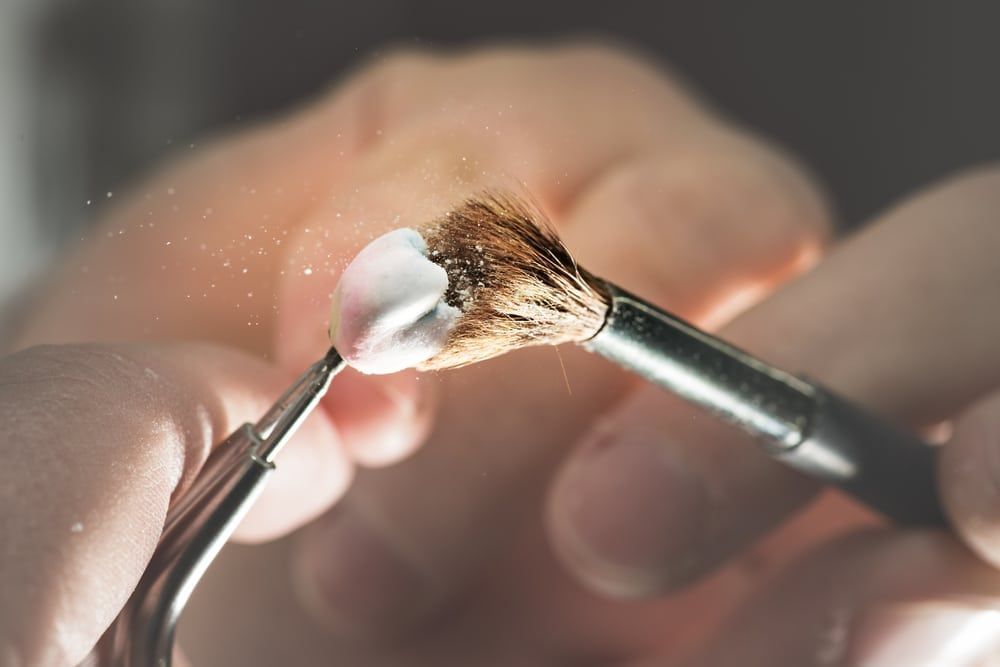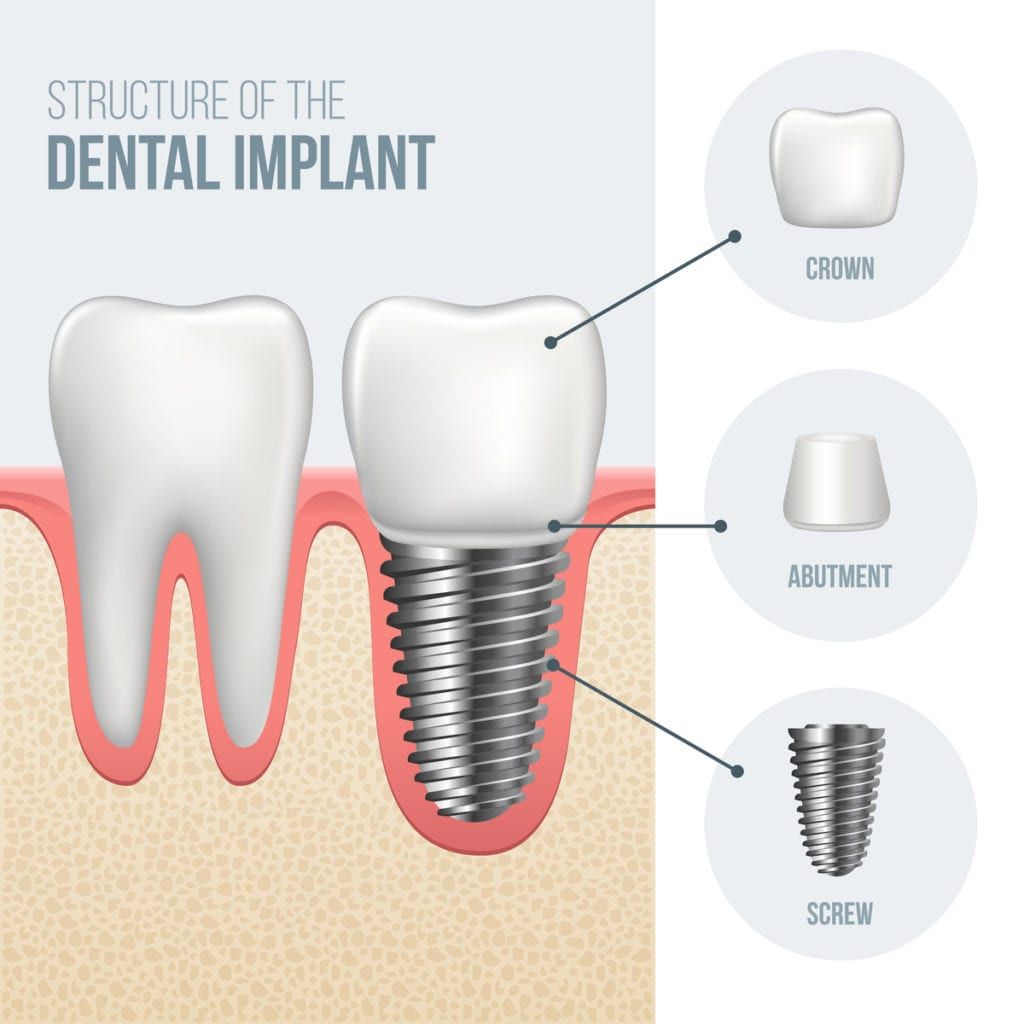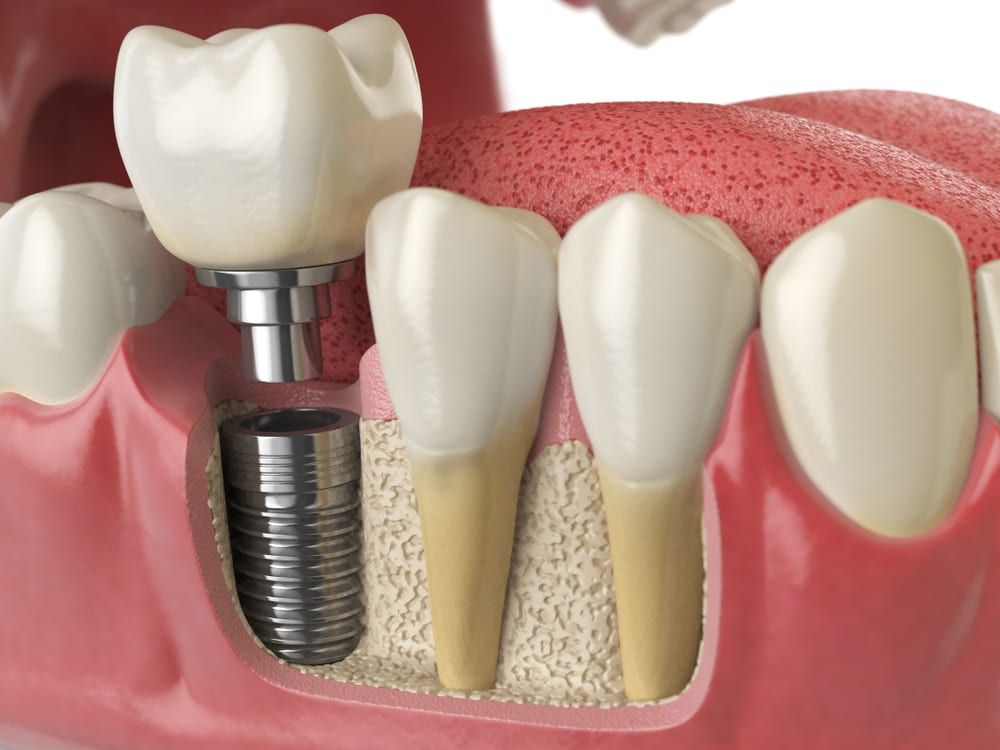Composite fillings – also known as tooth-colored fillings – are dental restorations designed to be inconspicuous and natural in appearance. They blend well with the teeth and appear more natural than amalgam fillings, which are darker and more easily seen by other people. Composite fillings are made of ceramic and plastic compounds that chemically bond to the teeth. They can be used to fill in decayed areas of the teeth, as well as to help repair chipped or broken teeth. Most dentists use composite restorations to treat the teeth closest to the front of the mouth, as they are more noticeable when patients smile. However, advancements in dental technology and the composition of composite fillings have made it possible for dentists to also use tooth-colored fillings on molars, which receive more wear than other teeth.
Composite fillings allow dentists to preserve more of the natural tooth structure? This is because composite materials chemically bond to the surface of the tooth like an adhesive. The process takes slightly longer to complete than traditional amalgam fillings, but patients can preserve more of the natural portion of the teeth while enjoying a restoration that is discreet and understated.
If you have a cavity, broken tooth, or a deteriorated filling, you may be a candidate for a tooth-colored filling. Schedule a dental consultation to find out if composites are right for you.
During your visit, your gums and teeth will be anesthetized with a local anesthetic near the site of the filling. Once the area is numb, the decayed or damaged portion of your teeth will be removed to make room for the new tooth-colored filling. A resin will be placed over the area and cured with a hand-held light for less than a minute. The new filling will then be shaped and polished before the procedure is complete.
Composite fillings are cured with light at your dentist’s office. You should be able to return to normal activity and oral care immediately after your visit. It’s normal for treated teeth to experience some sensitivity to hot and cold in the days following treatment, but sensitivity that persists beyond a week should be reported to your dentist.

Dental crowns and bridges are custom-fitted tooth prosthetics that are used to replace or restore damaged or missing teeth. The recommended material of choice are all Porcelain Crowns. Not only do they look better esthetically, but they are also healthier for your teeth.
If you have a tooth that is damaged or decayed, but still intact, a dental crown may be right for you. If your tooth is missing, but its former position is surrounded by other tooth structures, a bridge may be the solution for you. Schedule an office consultation to determine whether you could benefit from crowns or bridges.
If you are a candidate for a crown or bridge, your teeth will be reduced to ensure a proper fit. An impression will then be taken of your bite and used to fabricate a mold for the crown or bridge. If you are choosing porcelain prosthesis, its color will be matched to the natural shade of your other teeth. If a dental lab is making your crown or bridge, you may be fitted with a temporary restoration until the permanent one is ready for placement.
Your teeth will need time to heal following the crown and bridge placement process, so it is normal for you to experience some sensitivity – especially to hot and cold. Additionally, you may experience soreness in the gums surrounding your restorations, though this is usually manageable with ibuprofen and should subside within a few days
Dentures are removable tooth prosthetics designed to look and function like natural teeth. For thousands of years, some form of denture has been used to fill in the gaps left by missing teeth, although today’s dentures are much more advanced and easier to care for. Most dentures are composed of replacement teeth attached to plastic bases that take on the appearance of the gums. They are used to compensate for one or more missing teeth, and are available as partials and complete sets of teeth. Many dental patients elect dentures for tooth replacement if they are not candidates for dental implants or are otherwise looking for a tooth replacement option that is more affordable and budget-friendly.
Your dentures are custom designed to fit your smile, but did you know that improperly caring for them can cause them to become distorted? Most removable dentures must maintain moisture to retain their shape. Be sure to wash them after eating, gently clean them once daily, and allow them to soak overnight in a denture soaking solution. This will keep your dentures clean and free of stains, which ultimately helps your smile look its best.
If you are missing one or more teeth and thinking of getting dentures, you will first need a professional consultation with a dentist experienced in denture placement. During this time, you can explore your tooth prosthetic options, ask questions, and make a decision as to whether dentures are right for you.
Your gums must first be prepared before you can begin wearing dentures. If you need one or more teeth removed, the process could take several months while you wait for your gums to heal from the extractions. An impression will then be taken of your gums and the supporting bones beneath the gum, which will be used to fabricate a complete or partial denture in a dental lab.
Once your dentures are ready, you can begin wearing them on a daily basis. Expect the first few weeks to be an adjustment period, during which time you will adapt to the feel of your new dentures, as well as learn how to manipulate your tongue and cheek muscles to keep them in place. You may also experience slight irritation or soreness from the initial denture wear although this should subside after a few days or weeks.
A Dental Implant is a combination of 3 components to replace a missing tooth.


At Fresh Dental, Dr. Saesim utilizes 3D Cone Beam Technology, Digital Planning Software, and Surgical Guides to ensure accuracy when placing Dental Implants, which results in excellent long term prognosis and minimal post operative pain.
ARE DENTAL IMPLANTS RIGHT FOR ME?
You may qualify for dental implants if you have missing, broken or severely decayed teeth and are in relatively good overall health. The only way of determining your eligibility for implants is to consult with your dentist to identify whether you have adequate bone support and healthy gums that will support the new tooth structure.
WHAT SHOULD I EXPECT IF MY DENTIST AND I DECIDE DENTAL IMPLANTS ARE RIGHT FOR ME?
The placement of dental implants is a multi-step process that typically takes between 6 and 9 months to complete. It begins with a surgical procedure during which a titanium rod is placed where a previous natural tooth root once was. The gums are sutured shut over the implant, where is will stay for several months while it heals and begins fusing with the surrounding bone. Due to the nature of implant placement and its average procedure time of between 1 and 2 hours, you’ll be sedated and/or anesthetized for the duration of the treatment. At the conclusion of the healing period, you’ll return to be fitted for permanent crowns and have them placed.
WHAT TYPE OF POST-TREATMENT CARE WILL I REQUIRE?
It is normal to experience some discomfort, including bruising and swelling following a dental implant procedure. However, inflammation and pain may be managed with over-the-counter medications, hydrocodone, or codeine. You may be asked to eat only soft foods for approximately 2 weeks until the surgical site heals
Inlays and onlays are dental restorations that are more extensive than dental fillings but less so than caps and crowns. They are typically formed in a dental lab and are made of gold, porcelain or resin depending on the patient’s needs and aesthetic goals. An inlay refers to a restoration that is formed to fit the center of a tooth, whereas an onlay refers to a restoration that encompasses at least, one cusp of the tooth. Both inlays and onlays are bonded to the surface of damaged teeth and matched to the color of the surrounding teeth.
Inlays and onlays can serve as alternative treatments to dental crowns when you have a broken or damaged tooth? When fillings are not enough to adequately repair a tooth, an inlay or onlay can be custom-created to fit securely onto the tooth’s surface. Depending on the materials used, the restoration can be created to appear natural and will have the same function of an organic tooth. Inlays and onlays have extremely high success rates and because they are custom made for each patient, most last longer than traditional fillings.
You could be a candidate for an inlay or onlay in if you have moderate tooth damage or decay and are in search of an alternative restoration option to a crown or cap. Schedule a dental consultation for a complete examination and to find out if an inlay or onlay is right for you.
Your inlay or onlay restoration will be completed over multiple dental treatments. First, your tooth will be prepared for treatment, and an impression will be taken to serve as a mold for your new restoration. You may be fitted with a temporary restoration while your permanent inlay or onlay is fabricated. Once completed, you will return to have the temporary restoration removed and the permanent one bonded to the surface of the teeth.
Special care needs to be given to your teeth while temporary restorations are in place. It is important to avoid sticky or hard foods that could cause significant damage to temporaries. Once you receive your permanent inlay or onlay, you can resume normal eating, brushing and flossing habits.
Root canals are valuable dental procedures used to treat and preserve teeth with badly infected roots. The pulp is the live portion of the tooth that extends into the root and contains nerve endings and tissues. When it becomes infected, patients can experience pain, swelling and even total tooth loss unless treated. Root canals remove the damaged parts of the tooth and infected root.
Many patients associate root canals with pain and discomfort.
But local anesthetics and advancements in modern dentistry have made root canals highly tolerable procedures that are often no less comfortable than getting a standard filling.
You could be a candidate for a root canal if decay or damage has allowed bacteria to infect the pulp inside your tooth. A root canal could also be the right treatment for you if you prefer to preserve as much of your natural tooth as possible instead of extracting both the healthy and diseased portions of your tooth. For more information about root canals and whether they are right for you, schedule a dental exam and consultation at your earliest convenience.
If you decide to undergo a root canal, the first step in your procedure will involve a local anesthetic. Once your tooth root is numb, the diseased portion of your tooth pulp will be removed and potentially treated for bacterial infection. The tooth will then be sealed and filled before being restored with a crown.
It is normal for teeth to become inflamed after a root canal, potentially causing sensitivity for the first several days following treatment. However, normal brushing and flossing habits can be resumed immediately after treatment and restoration is complete
Like a bridge, partial dentures rest on surrounding teeth to fill in the gaps where one or more teeth are missing. But unlike a bridge, partial dentures are fully removable by the wearer. Partials are affordable alternatives to other types of dental prosthetics and are custom-made to blend in with each patient’s natural teeth. It takes a little time to adapt to new partials, but many people find that they reclaim much of their original function and aesthetics with partial dentures in place.
Partial dentures require gentle care and frequent cleaning. Once you get your new partial dentures, you’ll need to:
- Keep them moist at all times by soaking them in a denture solution when not in use
- Gently brush your dentures daily using a soft-bristled tooth brush
- Be careful not to drop your partial dentures, as they may break
- Avoid exposing your partial to hot temperatures that could cause warping
You may be a candidate for partial dentures if you have one or more missing teeth, and the space they once filled is surrounded by other teeth or permanent restorations. To find out more about whether partial dentures are right for you, schedule a consultation with your dentist.
If you decide to get a partial denture, you’ll need to visit your dentist to have metal clasps attached to your surrounding teeth and an impression made of the area your partial will fill. The impression will be sent to a dental lab, where a technician will fabricate a custom denture that includes a gum-colored base that will fit securely over your gums. A metal framework will be used to attach your new partial to the clasps on your natural teeth to ensure a secure fit.
Yes. Good oral health is still important – even if you have a few missing teeth. In addition to caring for your new dental prosthetic, you’ll also need to brush your gums and tongue twice daily to stimulate circulation and remove bacteria that could cause gum disease. Continue seeing your dentist twice yearly for exams and cleanings, and be sure to bring your partial dentures along to each visit. After a few years, you may find that your partial needs to be rebased to better fit the changes to the bone structure in your mouth.
Did you know…
that more than 60 percent of American adults are missing one or more teeth? Approximately 10 percent are missing all of their teeth – requiring a prosthetic solution that will restore function and aesthetics to their smiles. Many of those dental patients choose partial or full dentures to replace missing teeth. In fact, it is estimated that 35 million Americans currently wear partial or full dentures – a number that is only expected to rise as baby boomers begin to reach retirement.
Dental bonding is a non-invasive procedure that adheres a composite (tooth colored) resin to the surface of your teeth. It helps to create a brighter, more aesthetically pleasing smile without the use of prosthetics like dentures and tooth implants.
This procedure is most commonly used to treat teeth that are cracked, decayed, or discolored. It can also be used to make teeth appear longer and close spacing between teeth.
Dental bonding is one of the most affordable and quick cosmetic procedures that can be done to improve the appearance of your smile. In fact, within one visit you could get a more attractive smile and a boost in self-confidence!
Dental bonding is a great option for individuals who want an attractive smile, but do not want to undergo an invasive procedure like dental implants. If you have minor chips, cracks, and fractures in your teeth, discolored teeth, or decay that can be built upon, dental bonding might be a great option for you.
Ultimately, it’s important to consult with the dentist to determine if you’re a candidate.
Teeth that have undergone dental bonding can still be stained from things like coffee and tea. To avoid this, it’s advisable to avoid drinking any of these beverages for at least 48 hours after undergoing the procedure. Additionally, you can extend the life of your bonding by brushing regularly and visiting the dentists every six months.
When properly cared for, dental bonding can last up to ten years. You’ll get the most out of it by following a healthy oral hygiene routine, avoiding hard candies and chewing on ice, and staying away from food and drink that could stain your teeth. If you happen to enjoy a cup of coffee or tea, be sure to brush immediately afterward.